Could Any of This Crookedness Be Fixed After Rhinoplasty?
Rhinoplasty is the most important operation in facial plastic surgery. The form of the nose impacts facial symmetry and appearance. Consequently patients are left wondering the result procedure and one of the most common question is ” Can crookedness after rhinoplasty be fixed?” Ultimately, the postoperative healing and tissue adjustment play an equally important role in shaping the final outcome of the nose.
Causes of Crookedness After Rhinoplasty
Slight asymmetry or crookedness early post-operatively is acceptable and in fact to be expected initially. The bone, cartilage and soft tissue in a nose job are all re-sculpted in the process of rhinoplasty, so temporary imperfections result while tissues over the bone settle.
- Inflammation: It is normal to notice swelling after a nose job, which may change the position of nasal tissues temporarily, making your nose look crooked.
- Tissue adaptation: After surgery, both skin and the deeper layers of tissue adapt to new positions. In the course of this adaptation, moderate asymmetry is frequently present.
- Post-op pressure: The manner in which patients treat their nose and if they bump it slightly during the first few weeks, might also be the source of these merely temporary irregularities.
Most post-rhinoplasty crookedness typically resolves within a few weeks to several months. As swelling decreases and tissues settle, nasal symmetry improves naturally.
Determining If Crookedness Is Permanent
Although some temporary asymmetry is normal, in some cases it can lead to permanent crookedness. Risk factors Infrequent ovulation and anovulation continue to raise the risk of long‐term irregularities.
Surgical method: The technique and experience of the operator is important for attainment of nasal symmetry.
Bone and cartilage development: Any asymmetry in natural structure of the nose or poor underlying cartilage support can predispose to continued distortion.
Post operative care: Nasal splints should be used and the patient’s surgeon instructions followed closely for optimal nasal adaptation.
The nose will generally reach its final shape and position in 6 to 12 months. A little bit of crookedness will usually straighten out on its own, but if there’s a lot of asymmetry, people sometimes benefit from revisional surgery.
Advice for Dealing with Crookedness following a Rhinoplasty
- Splints and dressing: Wearing Use of the nasal splint during the required period will correlate with adequate healing tissues in its right place.
- Swelling and edema: Keeping the head elevated, applying cold compresses will help with swelling and when temporary crookedness exists, can also help straighten.
- Limit exertion: Do not participate in cardio, swimming or lift stuff during the first couple of weeks to avoid damaging your nasal tissues.
- Be kind: I don’t mean for you to press, rub or otherwise beat up the nose. Just try not to ruffle whatever tissue is trying to heal down there.
Patience and Recovery
Even slight crookedness or asymmetry typically resolves on its own. Patients need to be patient and trust what their surgeon tells them. Swelling subsides as it goes, tissues accommodate. The nose usually achieves its final, natural and symmetrical contour between 6–12 months following the surgery.
If significant or severe deviation is still present, your surgeon can discuss the potential benefit of a revision rhinoplasty. But any mild imperfections typically even out on their own as swelling goes down and tissues settle.
Conclusion
Some degree of deviation is a normal finding after rhinoplasty and typically resolves over weeks to months. There are benefits to nasal splints, edema control, and adequate postoperative care for achieving satisfactory aesthetic results. It is patience, good follow-up care, and compliance with the advice of your surgeon that allow the nose to heal in a natural, balanced manner creating an attractive face.
For more information or personalized guidance on crookedness after rhinoplasty, you can consult Assoc. Prof. Dr. Güncel Öztürk.







